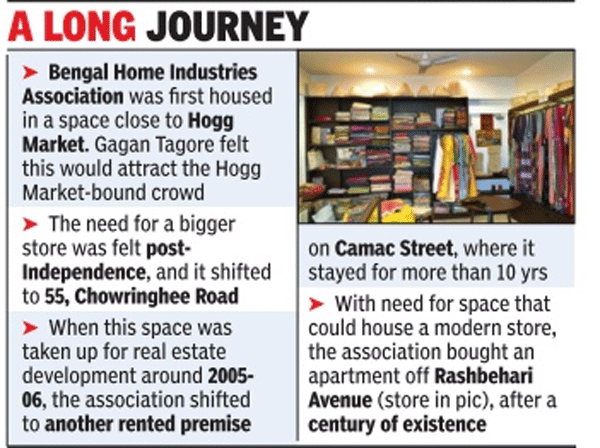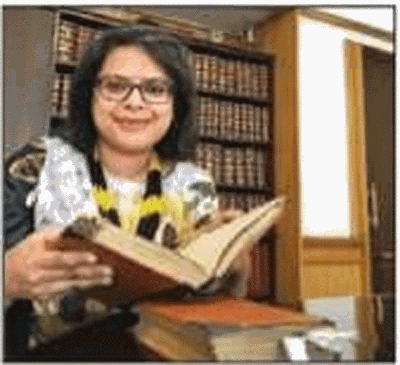Kolkata:
After 100 years, the Bengal Home Industries Association has finally moved into its own home.
Founded in 1916 by a group of intellectuals to give a boost to the swadeshi movement, the association had to run around from one rented place to another all these years. Touted as the country’s first NGO to promote Bengal’s handloom and handicraft, the association has bought its own outlet and reinvented itself to be in tune with the changing times.
The swanky outlet off Rashbehari Avenue is now ready to compete with other pan-India brands that promote handloom and handicraft. The focus has changed too: items for sale have been designed as lifestyle products to attract the urban cli entele. There is no shift from the basic theme of promoting village products, only that they are more stylish now.
In 1914, Rabindranath Tagore’s nephew, a prominent master of the Bengal school himself, Gaganendranath Tagore and his brother, Aba nindranath Tagore, along with some friends like Burdwan Maharaja Bijoy Chandra Mahtab and the royal family of Coochbehar, formed the association as a symbol of swadeshi. The idea behind forming the Bengal Home Industries Association was that it was not enough to just reject foreign goods but to also encourage our own weavers and craftsmen to make indigenous products. The association’s job was two-pronged: to network among village craftsmen and collect and sell their products.
The artist duo of Gaganendranath Tagore and Abanindranath Tagore added value and novelty to the products, making them a hit even with the elite clientele.
One such patron was Carmichael Duck. The story goes that Lady Carmichael -wife of the then Bengal Governor -who was close to members of the association, asked Gaganendranath to create some interesting designs that could be used on blocks. “Gagan Tagore created a motif of a duck created out of a simple geometric pattern.The design became popular overnight and was used widely for block printing on scarves, stoles and sarees,” said Nandini Mahtab, the “queen” of the Burdwan royal family and a member of the association.
The Bengal Home Industries Association has tied up with Banglanatak.com, a revivalist organization that is working on indigenous tangible and intangible art forms in Bengal. It is helping the association to use art forms, such as `patachitra’, on textiles to make lifestyle products like cushion covers, throws, runners and even tshirts and trousers.
The association was famous for items like its Portuguese cutwork and shadow work and a unique weave called Roshanara, which is created by mixing rayon and cotton yarn. “We have once again trained our artisans in these arts. While the Portuguese cutwork in home linen is available in our new store, Roshanara will make its entry any day now,” Mahtab added.
source: http://www.timesofindia.indiatimes.com / The Times of India / News Home> City> Kolkata / by Jhimli Mukherjee / April 11th, 2016



